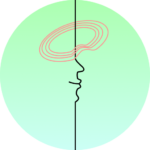Understanding Sleep Centers: A Comprehensive Guide to Better Sleep Health
Sleep Health Awareness This topic focuses on the importance of understanding sleep patterns and their impact on overall health. It aims to provide insights into common sleep disorders, tips for improving sleep quality, and the significance of maintaining a regular sleep schedule for better well-being.

Introduction to Sleep Centers
Sleep centers play a pivotal role in diagnosing and treating various sleep disorders, which are more common than many might realize. A sleep center is a specialized facility where sleep studies are conducted, and comprehensive care is provided to individuals experiencing sleep-related issues. The importance of sleep centers cannot be overstated, as they serve as a beacon of hope for those struggling with sleep disturbances that affect their daily lives and overall health.
Sleep disorders, such as insomnia, sleep apnea, restless leg syndrome, and narcolepsy, can significantly impact an individual’s quality of life. These conditions not only lead to daytime fatigue but also contribute to long-term health problems like cardiovascular diseases and mental health issues. Sleep centers are equipped with advanced technology and staffed by experts who can identify and address these disorders effectively.
One of the primary functions of a sleep center is to conduct sleep studies, also known as polysomnography. This non-invasive test records various physiological parameters during sleep, including brain waves, oxygen levels, heart rate, and breathing patterns. By analyzing this data, sleep specialists can diagnose the specific disorder and tailor a treatment plan to the patient’s needs.
In addition to diagnostics, sleep centers offer therapeutic interventions and follow-up care. This might include Continuous Positive Airway Pressure (CPAP) therapy for sleep apnea or cognitive behavioral therapy for insomnia. The comprehensive approach ensures that patients receive the necessary support to improve their sleep quality and, consequently, their overall health.
Common Sleep Disorders Addressed in Sleep Centers
Sleep centers are instrumental in diagnosing and managing a variety of sleep disorders. Understanding these conditions is crucial for appreciating the role of sleep centers in promoting better sleep health. Some of the most common sleep disorders include:
- Insomnia: Characterized by difficulty falling or staying asleep, insomnia can be acute or chronic. It often results from stress, anxiety, or lifestyle factors. Sleep centers offer cognitive behavioral therapy, which has proven effective in treating insomnia without medication.
- Sleep Apnea: This disorder involves repeated interruptions in breathing during sleep, leading to poor sleep quality and increased risk of cardiovascular issues. Sleep centers diagnose sleep apnea through polysomnography and often recommend CPAP therapy to maintain open airways during sleep.
- Restless Leg Syndrome (RLS): RLS causes uncomfortable sensations in the legs and an irresistible urge to move them, often disrupting sleep. Sleep specialists can recommend lifestyle changes and medications to manage symptoms.
- Narcolepsy: A neurological disorder that affects the brain’s ability to regulate sleep-wake cycles, leading to excessive daytime sleepiness. Sleep centers provide medication and lifestyle guidance to help manage narcolepsy symptoms.
Each of these disorders requires a tailored approach to treatment, highlighting the importance of personalized care available at sleep centers. By addressing these conditions, sleep centers help patients achieve better sleep, enhancing their overall well-being.
The Role of Technology in Sleep Centers
Technology plays a crucial role in the functioning of sleep centers, enhancing the accuracy of diagnoses and the effectiveness of treatments. Advanced equipment and software are utilized to monitor and analyze various aspects of sleep, providing valuable insights into sleep disorders.
One of the most significant technological tools used in sleep centers is the polysomnography machine. This device records multiple physiological parameters during sleep, such as brain waves, eye movements, muscle activity, heart rate, and breathing patterns. By capturing this comprehensive data, sleep specialists can identify abnormalities and pinpoint the specific disorder affecting the patient.
In addition to polysomnography, sleep centers employ actigraphy devices, which are worn on the wrist like a watch. These devices track movement and activity levels, offering insights into sleep patterns and disturbances over an extended period. This data is particularly useful for diagnosing conditions like insomnia and circadian rhythm disorders.
Technology also plays a vital role in treatment. For instance, CPAP machines used in treating sleep apnea have become more advanced, offering features like auto-adjusting pressure settings and humidification to enhance comfort. Moreover, mobile apps and wearable devices are being integrated into sleep therapy, allowing patients to track their progress and receive personalized feedback.
The integration of technology in sleep centers not only improves diagnostic accuracy but also enhances patient engagement and adherence to treatment plans. As technology continues to evolve, sleep centers are likely to adopt even more innovative solutions to improve sleep health.
Improving Sleep Quality: Tips and Recommendations
While sleep centers provide essential diagnostic and therapeutic services, individuals can also take proactive steps to improve their sleep quality. Here are some practical tips and recommendations that can complement the care provided by sleep centers:
- Maintain a Regular Sleep Schedule: Going to bed and waking up at the same time every day helps regulate the body’s internal clock, promoting better sleep quality.
- Create a Sleep-Conducive Environment: Ensure your bedroom is dark, quiet, and cool. Consider using blackout curtains, earplugs, or a white noise machine to minimize disturbances.
- Limit Exposure to Screens: The blue light emitted by phones, tablets, and computers can interfere with the production of melatonin, a hormone that regulates sleep. Try to avoid screens at least an hour before bedtime.
- Be Mindful of Diet and Exercise: Avoid heavy meals, caffeine, and alcohol close to bedtime. Regular physical activity can promote better sleep, but try to complete workouts at least a few hours before bed.
- Practice Relaxation Techniques: Techniques such as deep breathing, meditation, or gentle yoga can help reduce stress and prepare the body for sleep.
By incorporating these strategies into daily routines, individuals can improve their sleep quality, which in turn can enhance their overall health and well-being. These recommendations, combined with the guidance of sleep centers, can lead to significant improvements in sleep health.
The Future of Sleep Centers
The future of sleep centers is promising, with ongoing advancements in research, technology, and treatment methodologies. As our understanding of sleep disorders deepens, sleep centers are poised to offer even more effective solutions for those struggling with sleep issues.
One area of growth is the use of telemedicine in sleep care. Virtual consultations and remote monitoring allow sleep specialists to reach a broader audience, providing convenient access to care for individuals in remote or underserved areas. This approach can also facilitate ongoing support and follow-up, enhancing patient engagement and treatment adherence.
Research in sleep medicine is continually uncovering new insights into the causes and mechanisms of sleep disorders. This knowledge is driving the development of novel therapies and interventions, such as targeted medications and personalized treatment plans based on genetic and environmental factors.
Moreover, the integration of artificial intelligence (AI) in sleep centers holds great potential. AI algorithms can analyze vast amounts of sleep data to identify patterns and predict outcomes, aiding in the early detection and management of sleep disorders. This technology can also personalize treatment recommendations, further improving patient outcomes.
As sleep centers continue to evolve, they will remain at the forefront of promoting sleep health, offering hope and solutions to those affected by sleep disorders. The future of sleep centers is bright, promising a world where everyone can enjoy the benefits of restful and restorative sleep.
